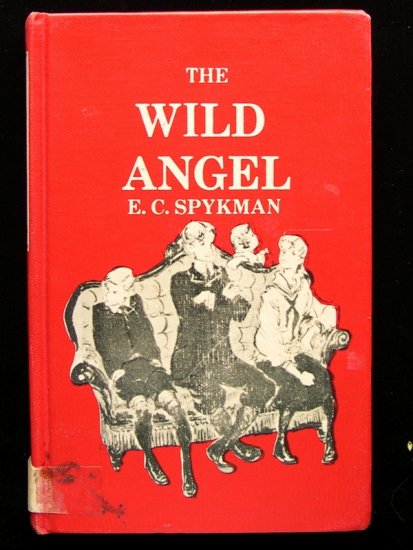CHAPTER 8: Lessons from Oprah, Harry, and the Internet
Chapter eight isn't my favorite
Read-Aloud Handbook chapter (because it's not really about books, per se) but Trelease does make some compelling statements about how, for a variety of reasons, schools often do a miserable job of "marketing" reading to children.
The love of reading is more caught than taught and best caught in groups.
Sigh. Another vote against institutional school. Truly, did you ever do a literature study in school that didn't make you want to die? I have two memories from high school where English was thrilling for me, both were with the same wonderful crazy-overeducated teacher. I also have a memory of reading the "Followup Questions" for the story "The Monkey's Paw" in a literature textbook, and just thinking, this is the most insulting thing that's ever happened in a year of wasted time.
Series books are avidly read by the best readers, without impeding their skills.
This sounds true, but wait, what about the
weaker readers? I don't even know what series books kids crack out on these days (in my day we ladies enjoyed the Sweet Valley High), but do those series have a positive or negative impact on the skills and comprehension of weaker readers? I'm all for lots of reading of whatever flavor, but I'd be curious to know what the science says about the impact of series titles on less fluent readers.
For what it's worth, I remember being distressed in the extreme when I ran out of Nancy Drew titles to borrow from the school library in 2nd or 3rd grade. I had a ravenous hunger for books, and Nancy Drew was one of the things that kept me from feeling starved, and for that I shall always appreciate her. (Plus I learned a fact or two from her, I remember something about gypsum solving one mystery and another book was full of intriguing information about Kachina dolls and Hopi Indian culture.)
CHAPTER 9: TV, Audio and Technology: Hurting or Helping Literacy?
The Trouble With TV: For some of the
benefits of TV for promoting early reading, visit the wonderful
Teaching My Baby to Read blog for her list of valuable DVDs!
As for the risks, here are some eye-opening stats from Trelease:
- "The doctors concluded that for each hour of daily TV viewed by the child before age three, the risk of attention deficit hyperactivity disorder by age seven increased 10 percent."
- "The presence of a television set in the child's bedroom was significantly associated with lower math, reading and language arts scores."
CC Serves a Purpose: Aha! On page 169, we arrive at one of my very favorite pieces of advice from this entire book: Turn on the closed captioning on your television set! Reading benefits to be enumerated below, but just as a grownup adult person, you will find yourself understanding so much more of every episode of TV that you watch. Plot-essential background noises is described, garbled jokes become comprehensible, and you will generally discover things about your programming that you never knew before!
Anyway, as for the kiddos: "The number of words flowing across the screen [via closed-captioning] in the course of three hours is more than the average adult would read in a daily newspaper or a weekly news magazine. Enabling the TV's closed-captioning is the equivalent of newspaper subscription, but, unlike the subscription, it costs nothing." Trelease also discusses evidence from Finland and the deaf community that supports the use of CC, and he references some science involving visual versus auditory receptors. Check out pp 169-171 for more.
Audio Books Are Awesome: Trelease gives audiobooks a big thumbs-up. He says that the average American commute (round-trip) is 50 minutes. I've also just read that the average American is in his or her car 15 hours a week. Over the course of a year or years, if those hours are given over to educational audio, driving delivers a large quantity of newfound "time on-task" that would otherwise be lost to Carly Rae Jepsen, et al.
According to Trelease, "the heaviest users [of audiobooks] are among the most literate people in America [and] 75 percent were college graduates and 41 percent had advanced degrees."
In addition to traditional audiobooks, Trelease gives a shoutout to NPR and the BBC. I've been meaning to do more "carschooling" and in researching have found recommendations for
Librivox (free recordings of public domain stuff) and this very charming archive of
children's records from the 1950s and 1960s, not to mention usual suspects Audible.com and the library.
And that's all folks! The rest of the Treasury is Trelease's very valuable compilation of read-alouds by age, interest and reading level, so this concludes our read-along of The Read-Aloud Handbook. Enjoy exploring his many wonderful recommendations, and good luck!













